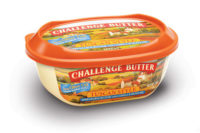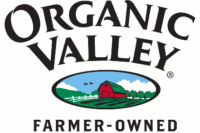

“Butter and sour cream have increased slightly as consumers continue to prepare more meals at home and limit dining out. Sales of these refrigerator staples have remained steady,” says the vice president of sales and marketing for Tillamook County Creamery Association, Tillamook, Ore.
The numbers back him up. Unit sales of Tillamook butter are up 5% over the 52-week-period ending Sept. 5, according to data from SymphonyIRI Group, Chicago (see table, opposite page). For the entire category, unit sales were off 1.7%. As measured by dollars, the story is a bit worse. The butter category fell 4.4% in the period. Cabot and Breakstone posted the largest declines, among the Top 10 brands. Two bright spots in the butter category are Crystal Farms and Darigold. Both posted gains in sales dollars and units.
Monthly butter production through August of this year has been below 2009 levels, according to the National Agricultural Statistics Service of the U.S. Department of Agriculture. Butter use typically increases in the fourth quarter because of holiday baking. Butter use is expected to grow slowly in the next 10 years, reaching nearly 1.67 billion pounds in 2019, according to an analysis by the Wisconsin Milk Marketing Board, Madison, Wis. Per capita butter consumption reached 5.1 pounds in 2008, a 34-year high. That’s expected to decline about 8% to 4.7 pounds by 2019.

Unilever’s I Can’t Believe It’s Not Butter!, the category leader, posted a slight increase in units, but saw dollar sales drop almost 4%. Its light brand (at No. 8) saw declines in dollars and units.
Land O’Lakes reported a “particularly strong performance” in its branded butter in the first quarter of the year, as well as in butter products in tubs and in half-sticks. In the first half of the year, sales were up in its dairy foods business, the company reported in August.
As in other dairy products categories, butter producers are looking to become more efficient in their manufacturing. Baraboo, Wis.-based Foremost Farms USA is investing in packaging and printing equipment at its Reedsburg, Wis., plants, says Doug Wilke, the cooperative’s vice president of marketing and technology.
Foremost Farms, a business-to-business producer of butter, cheese and whey ingredients, will manufacture 40 million pounds of butter this year, Wilke says. Its customers, who also buy cheese, seek low-sodium and low-fat products. One of the biggest challenges the industry faces is “competing against marketers of non-traditional styles of cheese and butter,” Wilke says. “Price and consumer acceptance of cheaper alternatives make it challenging to market premium cheeses and butter.”
Still, Foremost Farms expects to see growth in butter and cheese sales in 2011. “Foodservice sales have been strong for us and as the economy slowly improves, we expect this to continue,” Wilke says.
Minerva Dairy, Minerva, Ohio, a producer of artisanal butters with 85% fat content, saw growth in retail sales this year, says president Adam Mueller. The market will improve in 2011, he says. The dairy also services bakeries and confectioners.

Minerva Dairy’s marketing message is the functionality of butter with a high fat content. “You get a better product with our butter,” Mueller says.
“As consumers cook at home more, they want more choices. Consumers will see a lot more flavorful varieties offered in the dairy aisle,” says Mark Korsmeyer, executive vice president of Dairy Farmers of America, Kansas City, Mo.
“Spreadable, whipped or European-style options give the consumer the variety they are demanding,” he says.
DFA also is redoing Breakstone’s packaging in 2011. “The front-panel design has been simplified and photography added to better communicate Breakstone’s Kosher quality and fresh, creamy taste,” Korsmeyer says.
Producing a good product is the focus at Cabot Creamery Cooperative, Montpelier, Vt.
“We continue to focus on the quality of our butter,” says Amy Levine, director of marketing/sales services. Three of the company’s butters won awards in the American Cheese Society competition this summer.
Cabot is seeing greater growth in the unsalted category than the salted, Levine says.
“While salted is still much larger, the growth of unsalted butter speaks to increased consumer interest in cooking, especially baking. We partner with King Arthur Flour, one of the most respected names in the U.S. on baking, to introduce our high-quality products to bakers across the country,” she adds.
In August, Land O’Lakes entered into a marketing partnership with Box Tops for Education. Shoppers can earn cash for schools by collecting on-pack logos and redeeming them for cash. Land O’Lakes says it is the first dairy products company to participate in the program. (Other dairy products in the program include Simply…Go-Gurt and Yoplait Kids Yogurt from General Mills.) More than 80 SKUs of Land O’Lakes’ butters, spreads, cheeses and eggs carry the logo.
Dairy Farmers of America uses websites and special events to market to consumers and professionals. Its Cache Valley butter brand (named after a dairy farming region near Salt Lake City) sponsors a recipe contest. Now in its second year, the contest draws recipes from foodies in Utah and Idaho.
For foodservice accounts, DFA has put greater emphasis on visuals and step-by-step instructions. It created six educational videos, which chefs can watch on the Plugra website.
If the butter category is to grow, marketers must look to their colleagues in other dairy categories for niche product ideas and messages, like “all natural” and “local.”



